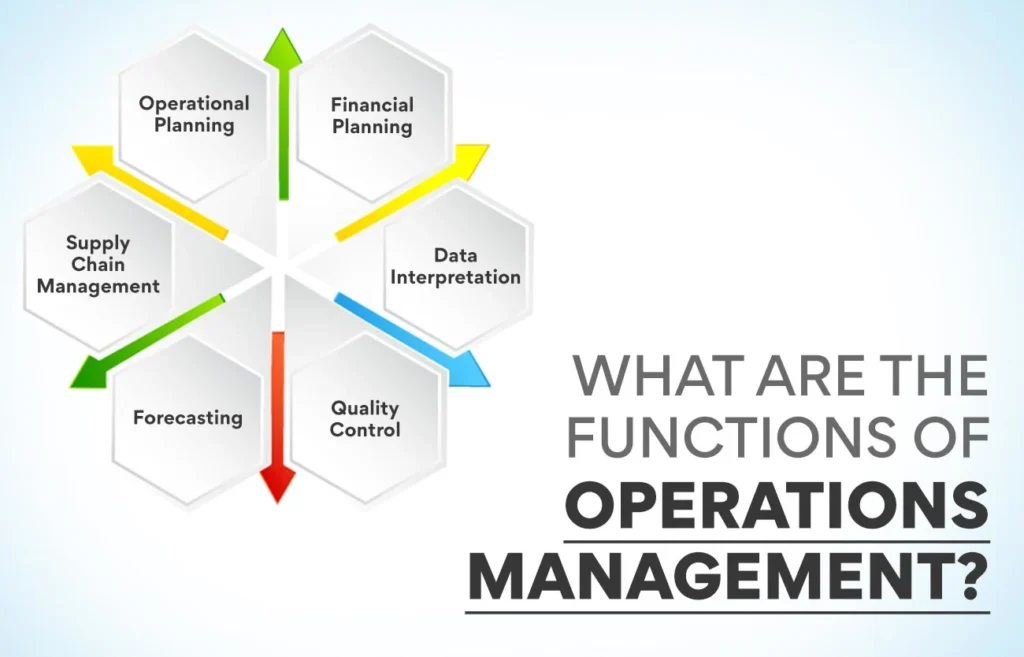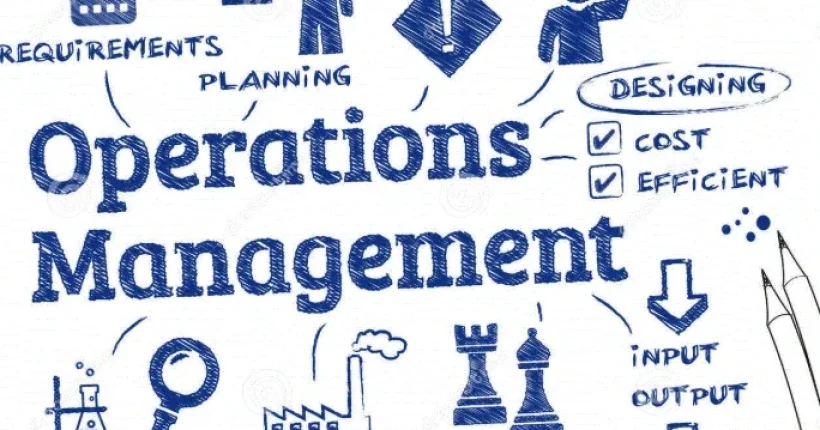Every successful organization relies on effective systems and processes to deliver quality products and services efficiently, and this is where the Functions of Operations Management play a crucial role. Operations Management focuses on planning, organizing, directing, and controlling business activities to convert resources such as manpower, materials, and technology into valuable outputs. Understanding the key functions of Operations Management helps businesses streamline workflows, reduce costs, enhance productivity, and maintain consistent quality. Whether in manufacturing, healthcare, education, or the service sector, these functions ensure that operations run smoothly and align with organizational goals.
If you’ve ever wondered how companies produce quality products at the lowest cost and deliver them on time, the answer lies in efficient operations management.
Let’s explore its major functions and how they contribute to business success.

Table of Contents
What is Operations Management?
Operations Management (OM) is the strategic administration of business practices that helps organizations improve efficiency, productivity, and profitability. It ensures that resources such as manpower, machines, and materials are utilized effectively to deliver high-quality products and services.
Key Functions of Operations Management
Operations Management functions can be understood under five main categories:
1. Planning Functions: Laying the Foundation
Planning sets the direction for all operations. It answers critical questions like what, how, when, and where products or services will be produced.
Key planning activities include:
Product Design & Development: Creating products based on customer needs, trends, and technological possibilities.
Process Planning: Selecting the most efficient production method—be it manual, automated, batch, or continuous.
Capacity Planning: Estimating how much production capacity is required to meet current and future demand.
Facility Location & Layout: Choosing the ideal location for operations and designing the most effective layout for workflow.
Why it matters: Good planning eliminates uncertainties and sets a roadmap for smooth operations.
2. Organizing Functions: Structuring the Operations
Once plans are made, operations managers organize the necessary resources to execute them.
Core organizing roles include:
Resource Allocation: Distributing manpower, machines, and materials to the right departments.
Workforce Organization: Building teams, assigning responsibilities, and ensuring the right people do the right jobs.
Coordination: Ensuring all departments—production, finance, HR, marketing—work in sync.
Key benefit: A well-organized structure increases efficiency and avoids confusion or duplication of work.
3. Directing Functions: Managing Daily Activities
Directing focuses on leading and guiding the workforce to execute plans effectively.
This involves:
Production Scheduling: Setting timelines, workflows, and activity sequences for production.
Supervision & Control: Monitoring daily operations to ensure quality, timelines, and safety standards are maintained.
Maintenance Management: Ensuring machines and equipment are in good working condition to avoid breakdowns.
Inventory Management: Managing raw materials, WIP, and finished goods to balance cost and supply.
Impact: Effective direction keeps operations on track and promotes productivity on the shop floor or service environment.
4. Controlling Functions: Ensuring Everything Stays on Track
Controlling helps measure performance and spot deviations from planned outcomes.
Major controlling activities include:
Quality Control: Maintaining consistent standards through inspections and testing.
Cost Control: Monitoring and controlling operational costs to ensure efficiency and profitability.
Performance Evaluation: Comparing actual performance with planned objectives and taking corrective steps when needed.
Outcome: It ensures the company delivers quality output within budget and on time.
5. Improvement & Innovation: Driving Growth and Competitiveness
To survive in a fast-changing world, businesses must continuously improve.
Improvement and innovation focus on:
Research & Development (R&D): Creating new products, adopting new technology, and improving processes.
Productivity Enhancement: Implementing automation, lean management, and better work methods to increase output.
Sustainability & Waste Reduction: Adopting eco-friendly, cost-saving practices for long-term gains.
Why it matters: Innovation keeps a company competitive, relevant, and future-ready.
Conclusion
Operations Management plays a vital role in the success of any organization. By effectively planning, organizing, directing, controlling, and improving operations, businesses can maximize efficiency, reduce cost, and deliver top-quality products and services.
In simple terms, Operations Management is the engine that powers business performance.

